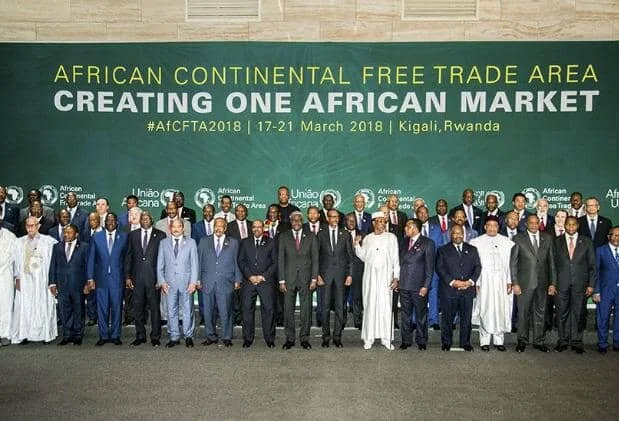Africa’s Free Trade Area Opens For Business
African countries opened their markets on 1st January under the continental free trade agreement and duty-free trading of goods and services across borders is now underway despite the COVID-19 pandemic and other teething problems.
The new market, created under the African Continental Free Trade Area (AfCFTA) agreement is estimated to be as large as 1.3 billion people across Africa, with a combined gross domestic product (GDP) of $3.4 trillion. This has the potential of lifting up to 30 million Africans out of extreme poverty, according to the World Bank.
“This is not just a trade agreement, this is our hope for Africa to be lifted up from poverty.”
It is also expected to boost intra-African trade, promote industrialization, create jobs, and improve the competitiveness of African industries on the global stage.
The pact will also empower women by improving their access to trade opportunities. Women make up the largest share of informal traders, representing 70 percent to 80 percent in some countries.
“Today is a historic day for Africa. In 1963 the founders of the Organization of African Unity had a vision of creating an Africa common market. The start of trading under the Africa continental free trade area today is an operational start towards the Africa common market. It has been a long journey of focus, determination, and resilience,” said Moussa Faki Mahamat, the Chairperson of the African Union Commission, at the launch.
He added that the common market brings real hope for inclusive and sustainable industrialization across Africa.
However, for a smooth rollout, countries have to agree on some of the remaining issues such as the Rules of Origin, which are a key element in international trade as they are the cornerstone of preferential trade arrangements such as AfCFTA.
Two years ago in March 2018 in Kigali, Rwanda, the treaty was signed by 44 countries. So far, 36 countries have ratified the treaty as of 4 December 2020 (photos below). It entered into force on 30 May 2019 and trading started on 1st January 2021. Was it not for the COVID-19 pandemic, trading would have started six months earlier in July 2020.
The World Trade Organization (WTO) defines Rules of Origin as “the criteria used to define where a product was made” and are important for implementing other trade policy measures, including trade preferences (preferential rules of origin), quotas, anti-dumping measures, and countervailing duties (non-preferential rules of origin). Duty and restrictions in several cases depend on the source of imports.
Countries that have ratified the AfCFTA agreement appeared to have agreed on the Rules of Origin on over 81 percent of tariff lines.
As of today, Africa is in a position to start trading on over 81 percent of products on preferential terms. These goods form part of the initial trading, while negotiations on the remaining 20 percent are ongoing and are expected to be concluded by July 2021, according to Mr. Faki.
But even as trading formally starts, the road to full implementation remains long. “It’s going to take us a very long time,” Mr. Mene
“If you don’t have the roads if you don’t have the right equipment for customs authorities at the border to facilitate the fast and efficient transit of goods… if you don’t have the infrastructure, both hard and soft, it reduces the meaningfulness of this agreement,” Mr. Mene told the Financial Times, before the launch.
Still, the promises of a free trade area are “transformative”.
The formal start of trading was given the official go-ahead at an extraordinary meeting in December 2020 where AU member states called on “women, youth, businesses, trade unions, civil society, cross border traders, the academia, the African Diaspora and other stakeholders to join them as governments in this historic endeavor of creating the “Africa We Want” in line with the Agenda 2063.
The summit gave the official go-ahead for formal trade to start on the first day of the new year.Over the years, regional economic communities such as EAC, the ECOWAS, and the SADC have tried to achieve these economic goals. The AfCFTA is set to bring these efforts together.
It was in 2012 that AU member States formally agreed to usher in a continental free trade zone and gave themselves 5 years to achieve the goal. But it was only in February 2016, within a year of the initial deadline, that negotiations started in earnest.
It took just under 5 years from negotiations to implementation. Just about the same number of years that was initially envisioned in 2012.
The views and opinions expressed here belong to the author or interviewee and do not necessarily reflect those of The Youth Cafe. To explore more resources, visit our Resources Page.




